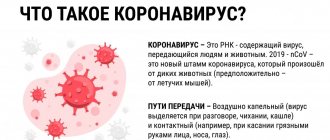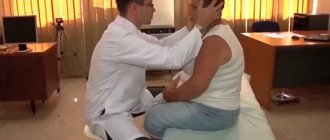What is this
“Brain fog” is a symptom that occurs in some diseases, as well as in healthy individuals after overwork or exposure to excessive stress.
The feeling of “fog in the head”, “a feeling of heaviness and futility”, “cloudy perception” and “cloudiness of thinking” is one of the most common complaints, probably familiar to every person. In most cases it is a temporary and completely reversible condition, but in rare cases it is the first sign of the onset of a serious illness.
Most often it occurs suddenly, causes great discomfort, causes anxiety and disrupts normal functioning (interferes with work, study, rest, communication, etc.).
The feeling of fog in the head is one of the components of the asthenic state.
Spinning and floating in my head
Julia
December 27, 2020
Hello, dear doctors. I am 27 years old. Please help me solve my problem and figure it out. At the beginning of November, I had a mild form of coronavirus, but neurologically it became very bad. In the third week of the illness there was severe weakness, dizziness, tremors, palpitations, insomnia, blood pressure jumped - when the norm was 120 to 80, it became 140 to 90 sometimes, it also happened with a normal pulse that I could hear the heart. Because of all these symptoms, there was a strong fear of a stroke or heart attack, a fear of being alone in my room and falling asleep, because there is no one nearby and if something happens they won’t be able to help me. Sometimes I asked my relatives to go to bed with me in my room. I got scared and went for examination. I began to actively read on the Internet and watch a sea of videos about diseases and symptoms, and became very fixated on my well-being and analysis of what was happening. I saw an endocrinologist, gynecologist, cardiologist, ophthalmologist, neurologist, and psychiatrist. As a result, the thyroid gland and hormones are normal, the blood test is normal, the ophthalmologist diagnosed angiopathy, the heart is normal but extrasystole according to the Holter conclusion, the doctor said that the heart is fine and the cause of the palpitations is in neurology. Neurologists all my life, even before Covid, diagnosed VSD and astheno-neurotic syndrome (I am a very suspicious, sometimes whiny and depressed person by nature, besides, in August, on my birthday, I got into an accident and received bruises and badly crashed the car, I’m serious I wasn’t hurt, but the stress was strong then, I continued to drive, but now I drive with caution, although it wasn’t my fault, in my personal life not everything is always smooth and I also sometimes get stress from it). MRI of the brain is also normal, ultrasound scanning of the vessels of the head and neck is normal. According to MRI of the neck, osteochondrosis and protrusion of C3 and C7. But I’ve had osteochondrosis all my life and for a long time, and I don’t think that the dizziness suddenly started because of it. In my life I have a sedentary lifestyle, work, car. I don't do sports. I started doing exercises every day and sometimes I walk. My height is 165, my weight is 55. Chronic diseases include reflux, esophagitis, amenorrhea due to polycystic disease, I drink Diane-35 all the time, vasomotor rhinitis, atonic intestinal colitis. Never in my life before coronavirus have I experienced such symptoms as I do now. I went to a psychiatrist and was prescribed Eglonil and Bellataminal for a month, she said I was having panic attacks. The neurologist added betaserc for dizziness for 10 days. After 2 weeks I felt a little better, the problem with insomnia disappeared completely, I sleep well, but now with the arrival of menstruation it has become worse again. I don't know if this is related. I went to the neurologist again - they wrote me post-Covid anxiety disorder - phobic disorder with panic attacks. They told me to stop taking Eglonil (I have 2 weeks left to drink it) and instead prescribed Teraligen, bellataminal and betaserc for 2 months. Mexidol, Mildronate, Actovegin, Combilipen, selenium, zinc, magnesium, vitamin D, vitamin C - I have been injecting and drinking all this over the past 1.5 months - there is no improvement. 3 days ago I was sitting at work and by the end of the working day I felt very dizzy and weak, fainting, but did not faint. Sometimes I also hear my heart beating, but I try not to pay attention. Yesterday I was shaking all day, as if I had chills but without cold, as if there was electricity inside the body, I don’t know how to correctly name and describe it, it’s not visible outwardly, there was some kind of internal trembling in my chest, arms and legs and it was like that all day long with morning and until evening, then stronger and weaker, by the evening it became better. Today I have been dizzy all day, not severely and not faintly, but like a foggy head and lightheadedness, and when I move my gaze from one object to another, it feels a little blurry for a fraction of a second, then it becomes normal and clear. There are no problems with vision. Weakness now after the coronavirus is not a big concern and it’s easier. The psychiatrist first said that if Eglonyl and Bellataminal did not make me feel better, she would prescribe Selectra. And subsequently, the neurologist who prescribed Teraligen said that if I didn’t get better, she would prescribe antidepressants. My question is this: do I need direct help from a psychologist or psychiatrist, personal conversations with them to improve my condition, or will it be enough for me to take pills on an outpatient basis without face-to-face conversations? And secondly, my condition is associated with panic attacks, but as I read, a panic attack lasts 5-10-30 minutes or several hours and is accompanied by fear, and for me my symptoms last throughout the day. And every day something, I wake up and after sleep, as soon as I wake up a little, I immediately start to feel dizzy all day, or I start to feel cowardly from within all day, and this is not accompanied by fear in me, it happens on its own, and it is the duration of this state that that it doesn’t go away makes me worry and worry about my health and the consequences, and only then I feel fear for my life. What could this be, and why is it not paroxysmal, but throughout the day every day? Help me please. I am very mentally tired of these states and lack of understanding of what is happening.
The question is closed
dizziness
shiver
faintness
Causes
The many causes of brain fog can be divided into two groups: overwork and illness.
Fatigue is caused by:
- Exposure to excessive stress.
- Lack of sleep, malnutrition (or starvation).
- Abrupt change in time zone or climate.
- Overload of information, physical labor, strong emotions.
- Past diseases and poisonings.
Conditions that cause brain fog:
- Psychiatric diseases: schizophrenia, psychosis, depression, neuroses, anxiety and psychosomatic disorders.
- Inflammation, fever (increased temperature), infections.
- Organic damage to brain tissue (traumatic brain injury, atrophy or brain tumors, strokes and heart attacks), encephalopathy.
- Vascular diseases (hypertension, hypotension), intracranial pressure disorders.
- Diseases of the cervical spine with impaired blood flow through the vertebral vessels.
- Diseases of internal organs, endocrine diseases.
What is accompanied by
The feeling of “fog in the head” is accompanied by other asthenic phenomena, the most common of which are the following:
- Feeling of general fatigue and malaise.
- Poor attention, difficulty learning and mastering new material.
- Altered perception: derealization and depersonalization.
- Thoroughness, getting stuck on little things.
- Feeling of unclear thinking, stupefaction and “stupidity”.
- Slowing down the flow of thoughts.
- Uncertainty in movements.
In addition, “fog in the head” is often accompanied by so-called psychosomatic symptoms: waves of heat or cold throughout the body, numbness or discomfort in different parts of the body, palpitations and shortness of breath, trembling, weakness, etc.
Associated symptoms
The feeling of “fog in the head” may be accompanied by other complaints and symptoms, which you can read about by clicking on the appropriate links:
- confusion in thoughts
- lack of emotions and feelings
- heaviness throughout the body
- chronic fatigue
- emotional instability
- increased tearfulness
- lump in the throat
- breakdown
- poor concentration
- difficulty making decisions
- need to double check
- burning sensation in the head
- feeling of internal change.
Which specialist should I contact?
If you have complaints about “fog in the head,” you should consult a neurologist or psychiatrist. If they are absent, see a doctor of any specialty.
How to get rid
In order to get rid of such an unpleasant symptom, you need to find out the cause. To do this, we recommend that you consult a doctor. The doctor will determine what the triggering factor was and what mechanisms in the body’s functioning were disrupted. Usually, one consultation with an experienced doctor is enough to clarify the causes of such a disorder. But in some cases, examinations in the form of analyses, tests, and hardware studies may be required.
If it turns out that the cause is overwork, then proper rest and isolation from external stimuli for a short time will completely eliminate all complaints. In such cases, doctors make a conclusion: Asthenic (astheno-neurotic) syndrome.
If the feeling of “foggy head” is a consequence of any disease, then treatment will be required. In this case, a diagnosis of the underlying disease that caused this complaint will be made.
We conducted an analysis over 10 years (from 2010 to 2021) of patients who came to our clinic with complaints of “fog in the head.” In about a third of cases, the cause of this symptom was overwork, and in 60-70% diseases were identified that caused this unpleasant feeling and required treatment.
Dizziness in the practice of a neurologist
About the article
21496
0
Regular issues of "RMZh" No. 12 dated June 24, 2005 p. 824
Category: General articles
Author: Kamchatnov P.R. 1 1 Federal State Autonomous Educational Institution of Russian National Research Medical University named after. N.I. Pirogov Ministry of Health of Russia, Moscow, Russia
For quotation:
Kamchatnov P.R. Dizziness in the practice of a neurologist. RMJ. 2005;12:824.
Dizziness is an extremely common complaint that prompts you to consult a doctor. About 2–5% of outpatients complain of dizziness [16], while its frequency increases with age and reaches 30 percent or more in the population over 65 years of age [19]. According to the modern definition, the concept of vertigo implies a sensation of imaginary rotation or translational movement of the patient in various planes or an illusory displacement of a stationary environment in any plane.
In the domestic literature, it is customary to distinguish two main clinical syndromes of dizziness - systemic and non-systemic. Systemic dizziness (vertigo) refers to a false sensation of rotational or linear movement of one’s own body or surrounding objects. The pathophysiological basis for the occurrence of dizziness is a mismatch in the activity of the vestibular, visual and propriceptive systems, which occurs at different levels of the nervous system. This kind of mismatch can be observed in a healthy person under the influence of appropriate high-intensity stimuli - during prolonged rotation, observing moving objects, being in a state of weightlessness, etc., which allows us to talk about physiological dizziness. Systemic dizziness can be considered as a consequence of direct damage to the vestibular apparatus. In this case, it is possible to isolate proprioceptive dizziness, i.e. sensations of passive movement of one’s own body in space; tactile or tactile dizziness - sensations of movement of the support under the feet or hands (floor, table), rocking on the waves, a feeling of sinking or lifting the body, rocking back and forth, left-right, up-down, unsteadiness of the soil (walking as if over bumps) and visual dizziness, perceived as forward movement of objects in the visible environment [9]. Non-systemic dizziness is a feeling of lightheadedness, loss of stability, loss of balance, “loss of ground under your feet,” “darkening in the eyes,” and ringing in the ears. Often, these conditions precede the development of fainting (lipothymia), although complete loss of consciousness may not occur. Characteristic of states of non-systemic dizziness are pronounced emotional disorders - a feeling of restlessness, anxiety, fear or, conversely, depression, powerlessness, a sharp loss of strength. A number of patients experience a combination of manifestations of both systemic and non-systemic dizziness. Especially often, a similar picture occurs in elderly and senile patients, against the background of a combination of several predisposing factors [1]. It is noteworthy that there is concomitant pronounced autonomic dysfunction in the form of decreased blood pressure, bradycardia (less commonly, tachycardia), distal or diffuse hyperhidrosis, and increased salivation. Autonomic disorders occur in patients with various types of dizziness; they often play an important role in the formation of the clinical picture of the disease. The causes of systemic dizziness are extremely varied; it may occur when the vestibular analyzer is damaged at various levels. It can be caused by damage to both the peripheral part of the vestibular analyzer and its central parts [9]. In this regard, it should be noted that it is extremely difficult, based only on clinical data, to accurately establish the cause of dizziness and topically localize the pathological process. It is believed that lesions of the vestibular analyzer account for 30 to 50% of all patients who complain of dizziness [11,37]. The most common form of attacks of systemic vertigo (up to 30%) is benign paroxysmal positional vertigo. Extremely important in its diagnosis is the occurrence of an attack depending on the position of the head, as well as positive Dix-Hallpike tests [27]. Repeated episodes of dizziness also occur quite often in patients with Meniere's disease. In relatively rare cases, isolated systemic vertigo is a consequence of a tumor of the cerebellopontine angle, infectious diseases (syphilis, HIV infection, etc.). Cases of the development of an attack of dizziness as an aura preceding a migraine attack have been described [21]. Diagnostic difficulties arise if the headache attack itself is absent or occurs in a reduced form. In the practice of a neurologist, one often has to deal with dizziness caused by cerebral circulatory disorders, primarily vertebrobasilar insufficiency. There is evidence that approximately 6% of all cases of dizziness are a consequence of cerebrovascular pathology [25]. As a rule, such patients also exhibit other neurological symptoms (lack of cranial innervation, conduction motor, sensory disorders, visual, coordination disorders). It should be borne in mind that extremely rarely dizziness is the only manifestation of vascular pathology of the brain. Despite the fact that isolated systemic vertigo can be observed in patients with acute occlusion of the auditory artery, anterior inferior cerebellar artery, accompanied by the formation of an infarct zone, such cases are rare and further diagnostic search is required to exclude other causes of vestibular disorders [14]. It should be emphasized that it is inappropriate to associate most episodes of paroxysmal dizziness, provoked by a change in head position, with compression of the vertebral arteries by altered cervical vertebrae. As a rule, these patients have benign paroxysmal positional vertigo or other forms of damage to the peripheral part of the vestibular analyzer. In case of a single episode of systemic dizziness lasting a day or more, the differential diagnosis should be made with vestibular neuronitis [21]. The causes of non-systemic dizziness are extremely diverse. The most common condition is arterial hypotension - with orthostasis, increased vasovagal reactions, cardiac arrhythmias and conduction disturbances. Similar episodes are possible in cases of carbohydrate metabolism disorders (hypoglycemia), endogenous intoxications, pregnancy, and anemia. A large number of somatic diseases, especially those accompanied by intoxication, are accompanied by a feeling of non-systemic dizziness. It should be borne in mind that a wide range of medications can provoke or intensify existing dizziness. These drugs include some antihypertensives (b-blockers), anticonvulsants (carbamazepine), sedatives (benzodiazepines), diuretics, and drugs containing L-DOPA. The likelihood of dizziness increases when combining drugs, using them in high doses, in elderly patients, as well as against the background of concomitant somatic pathology [14]. A manifestation of non-systemic dizziness are imbalances caused by impaired functioning of various parts of the central nervous system, in particular, those ensuring the integration of sensory pathways of various modalities. Violations of statics, coordination, and often falls, manifest themselves in various organic, often multifocal, lesions of the brain substance (vascular, traumatic, toxic origin, neurodegeneration). It is considered possible that non-systemic dizziness may occur due to degenerative changes in the cervical spine and the formation of myofascial syndrome [2]. In this case, proprioceptive impulses from the altered muscles of the neck and shoulder girdle can play a certain pathogenetic significance. Balance disorders not accompanied by severe dizziness are observed in patients with bilateral peripheral lesions of the vestibular apparatus. Deterioration of coordination in such patients is observed when walking on an uneven, soft surface, in a dark room [13]. The mechanism for ensuring balance is one of the oldest acquired by humans in the process of evolution [4]. In addition to the close integration of the vestibular, visual, proprioceptive and tactile sensory systems, it has close, extensive connections with a wide variety of brain structures. In this regard, dysfunction of the vestibular analyzer (in particular, the appearance of a feeling of dizziness) is accompanied by severe emotional disorders. It is well known that the feeling of dizziness is painful for patients, especially when combined with other neurological disorders - impaired coordination, hearing loss, a feeling of tinnitus (which is often found in circulatory disorders in the vertebrobasilar system). A significantly higher prevalence of anxiety and depressive disorders was established in patients with dyscirculatory encephalopathy and suffering from dizziness. The presence of dizziness, even if not accompanied by imbalances and coordination that are significant for daily activities, leads not only to emotional disturbances, but also to a significant decrease in the quality of life of patients. On the other hand, dizziness itself may be a manifestation of emotional disorders. Dizziness is one of the most common complaints made by patients with psychogenic disorders and is observed in 79% of patients with hypochondriacal syndrome, in 80% of patients with hysterical neurosis, and in a significant number of patients with depressive conditions [8]. A particular form of psychogenic disorders of the function of the vestibular apparatus is phobic positional vertigo, which is characterized by a feeling of instability, unsteadiness of the floor underfoot, subjective disturbances in gait and coordination of movements in the limbs in the absence of objective signs of ataxia and satisfactory performance of coordination tests. It is characteristic that this condition occurs predominantly in people with high levels of anxiety and obsessive-compulsive disorders and is not a direct analogue of phobic conditions such as agoraphobia, although in some cases differential diagnosis can be difficult [12,18]. The presence of dizziness in patients with panic attacks is undoubtedly common (of the 13 symptoms characteristic of panic attacks included in the DSM-IV, dizziness is one of the most common) [36]. It is noteworthy that patients with vestibular disorders experience progressive impairment of cognitive functions, and this concerns not only spatial thinking, but also, in particular, functions such as visual pattern recognition [35]. The authors found that bilateral lesions of the vestibular analyzer are accompanied by a decrease in the volume of the hippocampus (according to MRI data) and a decrease in the quality of performance on spatial memory tests. It is important that the severity of cognitive impairment correlated with symptoms of depression and anxiety, but not with the severity of dizziness. The vestibular analyzer has a very complex neurochemical organization. It has been established that histamine plays an important role in the transmission of information from the semicircular canal receptors, in particular histamine H1- and H3-receptors (but not H2-receptors, predominantly located in the gastrointestinal mucosa) [31]. Cholinergic transmission has a modulating effect on histaminergic neurotransmission [24]. It is believed that acetylcholine is one of the main neurotransmitters that ensures the transmission of information from receptors to the lateral vestibular nuclei, as well as to the central parts of the analyzer [28]. Experimental data suggest that it is thanks to the interaction of the choline and histaminergic systems that vestibulo-vegetative reflexes are realized [23]. Vestibular afferentation to the medial vestibular nucleus is provided by both histamine and glutamatergic pathways [23]. A significant role in the modulation of ascending impulses is played by g-aminobutyric acid, dopamine, serotonin, and possibly neuropeptides [20]. GABAergic fibers have an inhibitory effect on afferent impulses, which allows us to consider influencing them as a therapeutic option for dizziness [34]. Examination of a patient with complaints of dizziness involves establishing the very fact of the presence of dizziness and clarifying its topical and nosological affiliation. It should be noted that patients can often put very different meanings into the concept of dizziness, including, for example, blurred vision, a feeling of nausea, headache, etc. In this situation, the doctor’s task is to carry out a differential diagnosis between dizziness and complaints of a different nature. During questioning, you should not push the subject to name a specific term; it is much more advisable to get from him the most detailed description of the existing complaints. A neurological examination is of great importance, in particular, identifying and determining the nature of nystagmus (its direction, symmetry, connection with the position of the head, etc.), the state of the cranial nerves and the accuracy of the coordination tests. Many patients require examination by an otialogist (vestibulologist) or otoneurologist using instrumental methods for diagnosing the condition of the vestibular apparatus, hearing, and vision. Even a full and comprehensive examination in some cases does not allow establishing a diagnosis, which requires dynamic monitoring of the patient. Diagnosis of combined forms of dizziness is especially difficult [26]. Treatment of a patient with dizziness should first of all consist of eliminating the cause of its occurrence. This is especially true for patients with inflammatory, vascular and other causes of the disease that can be cured. It is extremely important to timely relieve attacks of dizziness, as well as eliminate concomitant vegetative and psycho-emotional disorders. Subsequently, it is necessary to carry out therapeutic measures aimed at compensating for impaired functions of the vestibular apparatus. It is believed that as acute dizziness is relieved, it is necessary to carry out active rehabilitation of the patient, including therapeutic exercises, dosed physical activity, and physiotherapeutic measures. The main focus of these classes is to ensure maximum independence in everyday life and minimize the risk of falls, as a potential source of injury [22]. In order to reduce the intensity of dizziness, drugs are used - vestibulolytics, which inhibit the activity of vestibular receptors and ascending conduction systems. It is believed that the duration of such treatment should not be excessively long, since vestibulolytics, by inhibiting the activity of nerve formations, prevent the development of compensatory reparative reactions [30]. Moreover, some drugs used for a long time to relieve dizziness can not only lead to the elimination of subjective symptoms, but also provoke an increase in the manifestations of ataxia, balance disorders, and general weakness. The use of vestibulolytic drugs is largely determined by the characteristics of the neurotransmitter organization of the vestibular system. In this regard, to relieve and prevent attacks of systemic dizziness, drugs that interact with histamine H1 and H2 receptors, in particular, betahistine hydrochloride, are widely used [3]. Drugs that limit the entry of calcium ions into the cell (cinnarizine, flunarizine) are widely used, although the exact mechanism of their action in this situation has not been fully revealed [30]. A rather difficult problem is the management of patients with predominantly non-systemic dizziness. The therapeutic approach is determined by the nature of the leading pathological process (psycho-emotional disorders, level of organic brain damage, disorders of propriocetal afferentation, etc.) and often the choice of therapeutic tactics is made empirically. Drugs from the pharmacological groups of antidepressants, anxiolytics, anticonvulsants, and neuroleptics are used; when choosing them, it should be borne in mind that most of these drugs themselves in a certain situation (for example, with inadequate dosage) can cause dizziness [15,33]. One of the most common approaches to the treatment of patients with dizziness is the use of combination drugs that have vestibulolytic and sedative effects, helping to eliminate vegetative manifestations [5]. A representative of this group of drugs is Bellataminal, which contains 0.1 mg of belladonna alkaloids, 0.3 mg of ergotamine tartrate and 20 mg of phenobarbital. The main active component of belladonna alkaloids is the active levorotatory isomer hyoscyamine, which has antagonistic properties towards cholinergic receptors. Being indistinguishable cholin blocks, nevertheless, hyoscyamine has a great affinity for M - cholinoreceptors, which explains most of its pharmacological effects. An important property is the ability to penetrate through a hematoencephalic barrier, due to which the effect of the drug is realized not only at the level of postganglionic parasympathetic nerves, but also due to exposure to the autonomic formations of the central nervous system [7]. In relation to patients with dizziness, it is an important ability to reduce the intensity of the sensation of rotation and reduce the intensity of autonomic disorders [30]. The clinically significant is the decrease in nausea, hyperhidrosis, hypersalivation, bradycardia, as a result of which dizziness episodes are much more easier to carry [6]. Due to the features of their pharmacological properties, alkaloids of handsome can be used to stop various forms of dizziness - systemic, non -systemic, accompanied by vegetative disorders, motion sickness and other kinetoses [29,32]. It is necessary to take into account the presence of a number of undesirable effects due to the cholinolytic properties, which eliminate the use of beautiful drugs in patients with intracardial conductivity disorders, glaucoma. Ergotamine, which is part of the Bellatamin, has a moderate ability to block A -adrenergic receptors. At the same time, the blocking effect in relation to adrenergic receptors in the drug is low (approximately 20 times lower than in dihydrated derivatives - dihyroergotoxin and dihydroergotamine), while the ergotamine has its own adrenromytacor of action on the peripheral arteries. The resulting effect, as a rule, is vasospasm (its severity depends on the dose of the drug) and a moderate increase in systemic blood pressure. In addition, like the rest of the derivatives, ergotamine has a moderate antiserotonin effect. Given the ability to cause vasospasm, you should be used with caution drugs containing the alkaloid, in patients with a pronounced stenosis damage to the coronary arteries, the retina artery. Finally, the phenobarbital in small doses has a moderate sedative effect, as a rule, not reaching the degree of oppression. When prescribing bellatminal, its good pharmacoeconomic indicators should also be taken into account - the relatively low cost of the drug makes it accessible to most patients. Thus, it seems that a successful combination of pharmacological effects of components allows you to use (taking into account the existing restrictions) the drug Bellatamal to stop dizziness of various genesis. Literature 1. Golubev V.L., Wein A.M. Neurological syndromes. M., Aidos - Media, 2002. 2. Gorbacheva F.E., Matveeva L.A., Chuchin M.Yu. About cervical dizziness. RMG, volume 12 No. 10, 2004. 3. Gusev E.I., Nikonov A.A., KKVORTSOV V.I., Avakyan G.N., Gordeeva T.N., Katunina E.A., Atayan A. IN. Treatment of dizziness with the drug Betaserk in patients with vascular and traumatic lesions of the brain journal of neurology and psychiatry, 1998; eleven; 43–47. 4. Dix M.R., Hood D.D. (ed.) Dizziness. M., Medicine, 1989. 5. Nikiforov A.S., Konovalov A.N., Gusev E.I. Clinical neurology M., Medicine, 2002. 6. Patyakina O.K. Therapeutic tactics with a vestibologian dizziness. Consilium Medicum2001; 4; 15. 7. Sokolov S.Ya., Skutaev I.P. Handbook of medicinal plants M., Medicine, 1984. 8. Tabeeva G.R., Wein A.M. Dizziness in psycho -vegetative Consilium - Medicum syndromes, Volume 4, N15, 2001. 9. Sheremet A.S. Dizziness as a sign of the lesion of the vestibular analyzer. Diagnostic stereotypes. Consilium Medicum. Otolaryngology. 2001; 04; 15. 10. Bloyh RW Dizziness and Verigo. Office Practice of Neurology Eds Ma Samuels, S Feske –new York, 1996 -p 83–91. 11. Bird JC, Beynon GJ, Prevost AT, BAGULYY DM. Analysis of Referral Patterns for Dizziness in the Primary Care Setting. BR J Gen Pract 1998, 48: 1828–1832. 12. Brandt t; Kapfhammer HP; Dieterich M Phobic Postural Vertigo. " A Further Differentiation of Psychogenic Vertigo Conditions Seems Necessary. Nervenarzt. 1997; 68 (10): 848–849. 13. Brandt T. Vertigo. Its Multisensory Syndromes. 2nd ed. Springer, London, 2000. P.441–451 14. Baloh RW. Dizziness, Hearing Loss, and Tinnitus. New York: Oxford University Press, 1998: 107–25. 15. Cesarani A., Alpini D., Monti B, Raponi G. The Treatment of Acute Vertigo. Neurological Sciences 2004; 25; S1; 26–30. 16. Colledge NR, Wilson Ja, Macintyre CC, Maclennan Wj. The Prevalence and Characteristics of Dizziness in An Elderly Community. Age Aging 1994, 23: 117–120. 17. Sloan PD. Dizziness in Primary Care. Results from the National Ambulatory Care Survey. FAM PRACT 1989, 29: 33–38. 18. Dieterich M Zurich Vertigo Meeting - Phobic Postural Vertigo. Schweiz Rundsch Med Prax, 1997; 86 (40): 1554–1557. 19. Drachman da, Hart CW. An Approach to the Dizzzy Patient. Neurology 1972, 22: 323–34. 20. Gil --loyzaga Pe. Neurotransmitters of the OlivoCochlear Laterel Efferent System: with an embhasis on doopamine. Acta Otolaryngol. 1995 mar; 115 (2): 222–6. 21. Halmagyi Gm.diagnosis and Management of Vertigo. Clin med. 2005; 5 (2): 159–65. 22. Herdman SJ, Schubert MC, Tusa Rj.strategies for Balance Rehabilition: Fall Risk and Treatment. Ann NY Acad Sci. 2001 Oct; 942: 394–412. 23. Horii A, TAKEDA N, MOCHIZUKI T, OKAKURA - MOCHIZUKI K, Yamamoto Y, Yamatodani a, Kubo T. Vestibular Modulation of the Septo - Hippopal Cholinergic System . Acta Otolaryngol Suppl. 1995; 520 pt 2: 395–8. 24. Housley GD, Norris Ch, Guth PS. Histamine and Related Substance Influence NeurotransMission in the Semicircular Canal. Hear res. 1988 SEP 1; 35 (1): 87–97. 25. Kroenke K, Hoffman Rm, Einstadter D. How Common Are Various Causes of Dizziness. Southern Medical Journal 2000, 93: 160–167. 26. KWONG KC, Pimlott JG Assessment of Dizziness Among Older Patients at a Family Practice Clinic: A Chart Audy BMC Family Practice 2005, 6: 10.1186/1471–2296–6–2 27 27. Lawson J, Johnson I, Bamio de, Newton JL.Benign Paroxmal Positional Vertigo: Clinical Charteristics of Dizzzy Patterred to a Falls and Syncope Unit. QJM. 2005 May; 98 (5): 357–64. Acta Otolaryngol Suppl. 1984; 419: 62–70. 29. Murray jb.psychophysiological assects of Motion Sickness. Percept Mot Skills. 1997 Dec; 85 (3 pt 2): 1163–7. 30. Rascol O, Hain TC, Brefel C, Benazet M, Clanet M, Montastruc Jl.antivertigo Medications and Drug - Induced Vertigo. A Pharmacological Review. Drugs. 1995 nov; 50 (5): 777–91. 31. Serafin M, Khateb a, Vibert N, Vidal PP, Muhlethaler M. Medial Vestibular Nucleus in the Guinea - Pig: Histaminergic Receptors. I. An in vitro Study. Exp Brain Res. 1993; 93 (2): 242–8. 32. Setness Pa, Van Beusekom M. Patient Notes: Motion Sickness. Postgrad med. 2004 Oct; 116 (4): 64. 33. Swartz R, Longwell P.TreATMENT of Vertigo. Am Fam Physician. 2005 Mar 15; 71 (6): 1115–22. 34. Smith PF, Darlington Cl.pharmacology of the Vestibular System. Baillies Clin Neurol. 1994 nov; 3 (3): 467–84 35. Smith pf, Zheng Y., Horii A., Darlington Cl Does Vestibular Damage Cognitive Dysfunction in Humans? Journal of Vestibular Research 2005; 15; 1: 1–9. 36. Tusa rj. Dizziness. Med Clin North Am. 2003 May; 87 (3): 609–641. 37. Yardley L, OWEN N, NAZARETH I, LUXON L. Prevalence and Presentation of Dizziness in a General Practice Community Sample of Working Age People. BR J Gen Pract 1998, 8: 1131–1135.
Content is licensed under a Creative Commons Attribution 4.0 International License.
Share the article on social networks
Recommend the article to your colleagues









